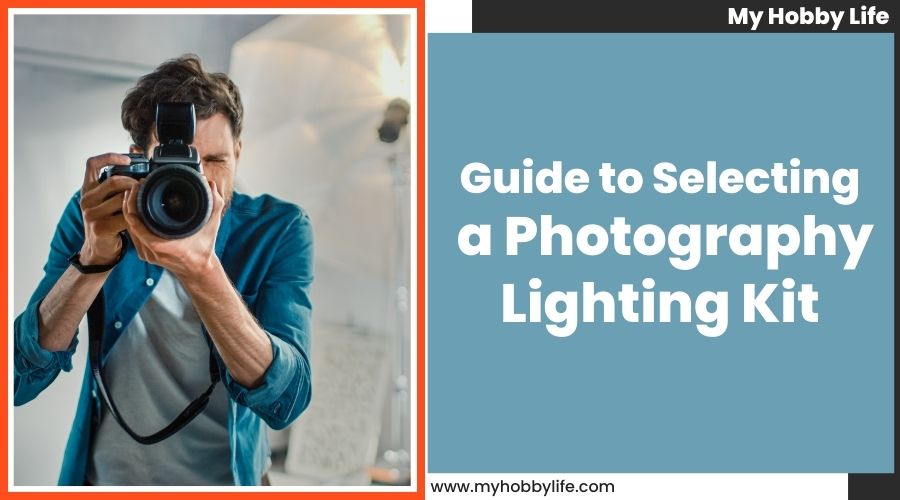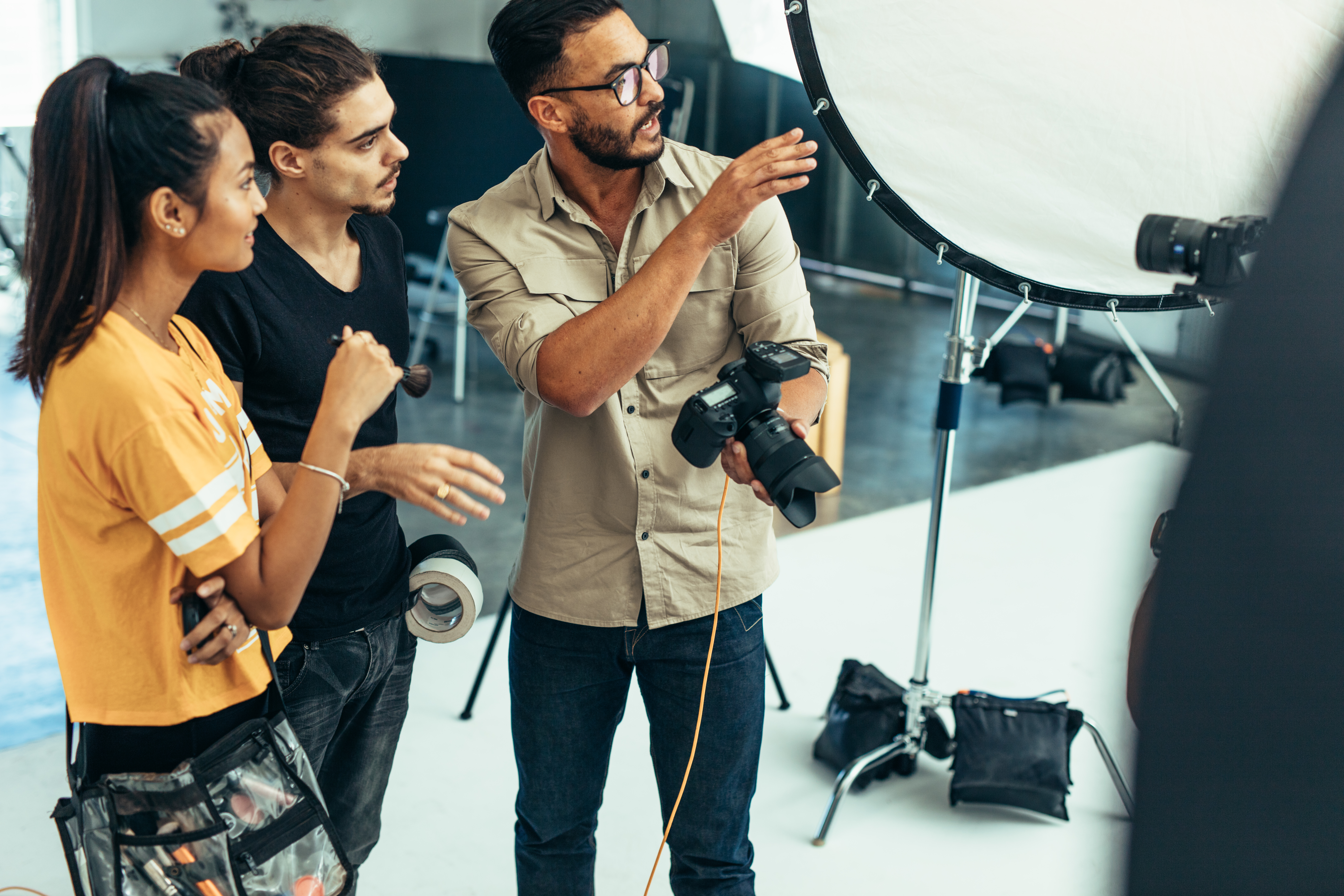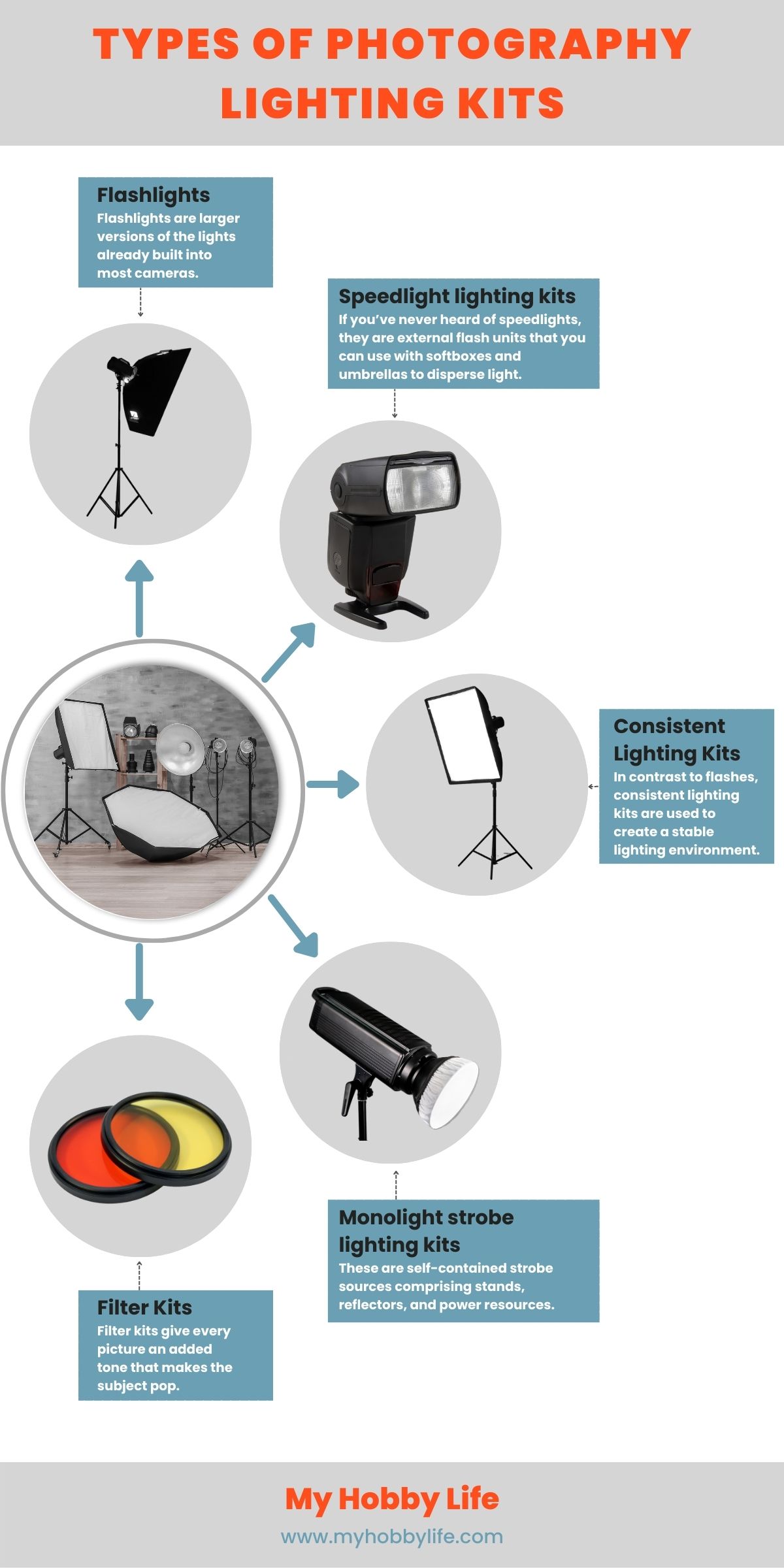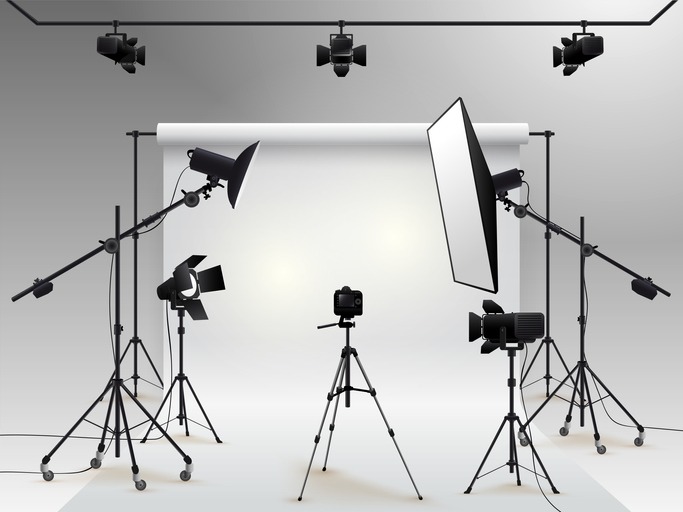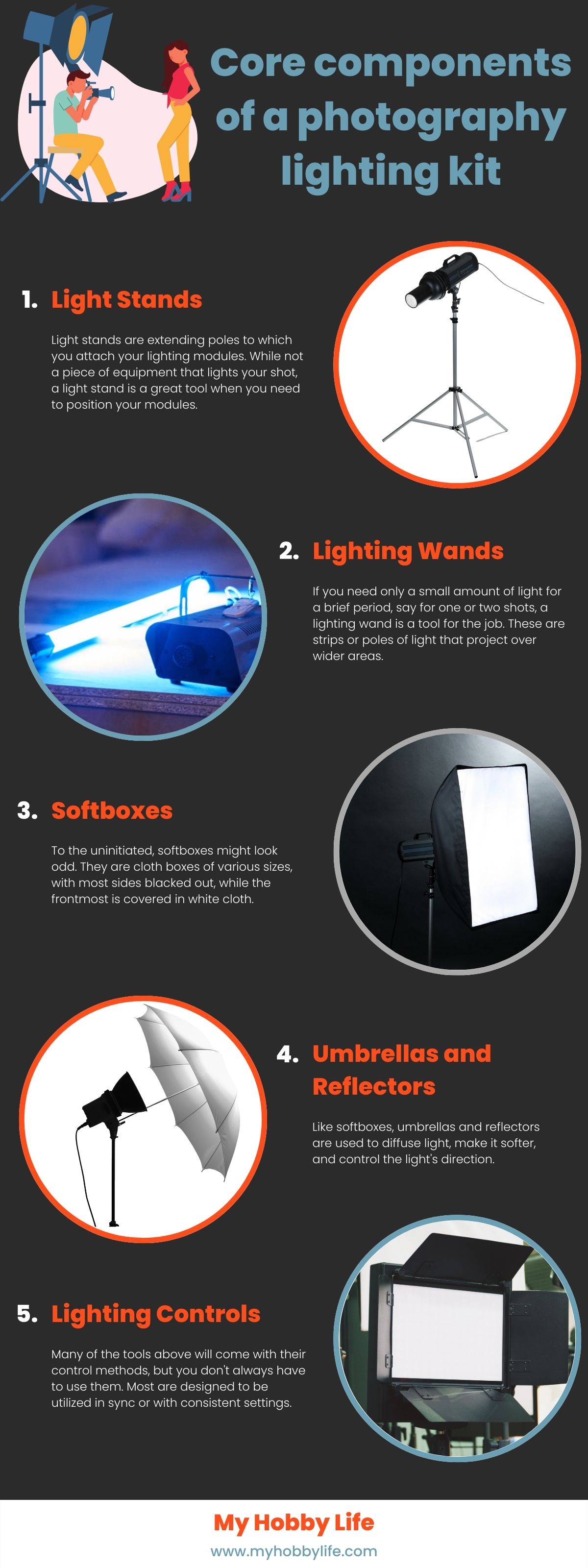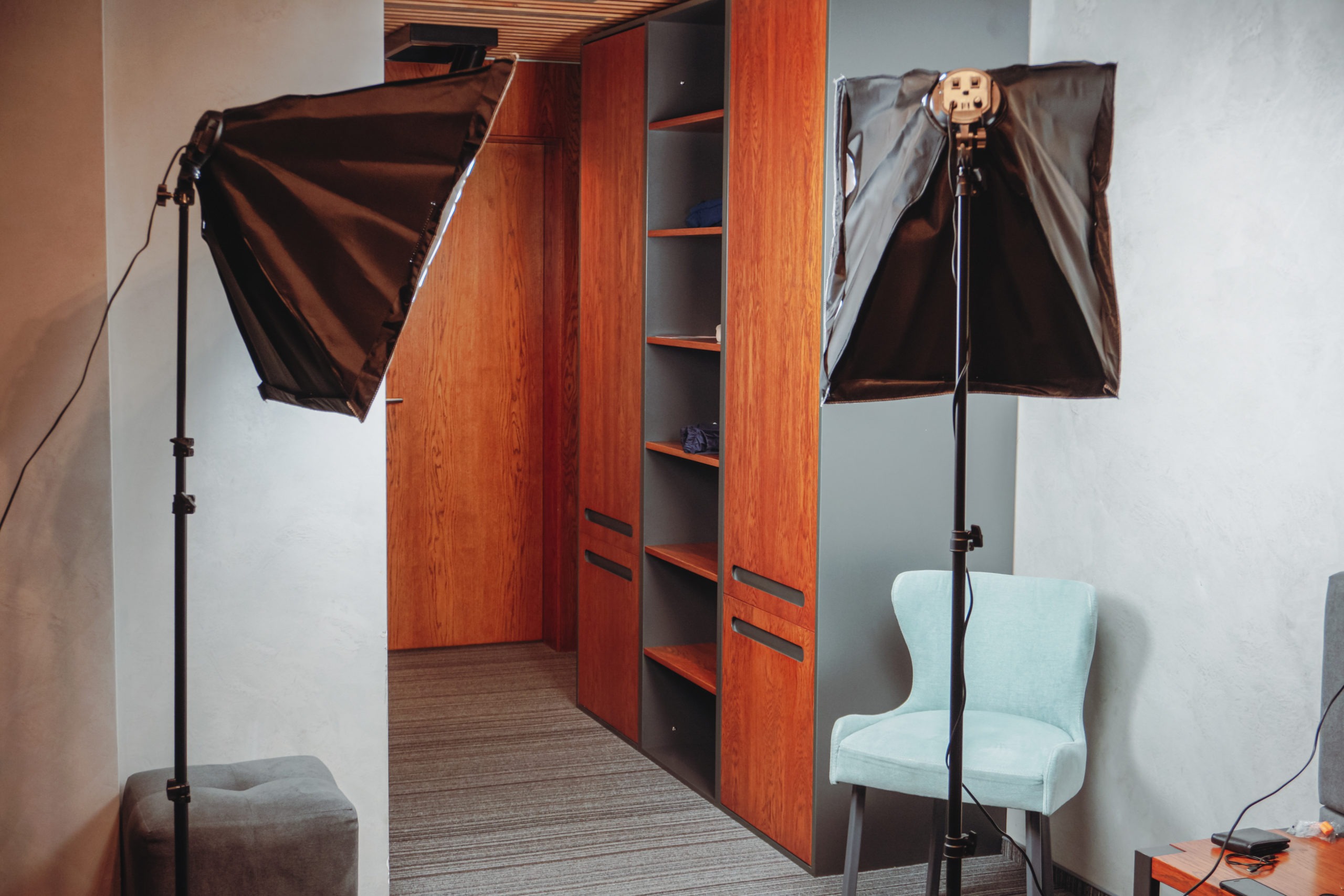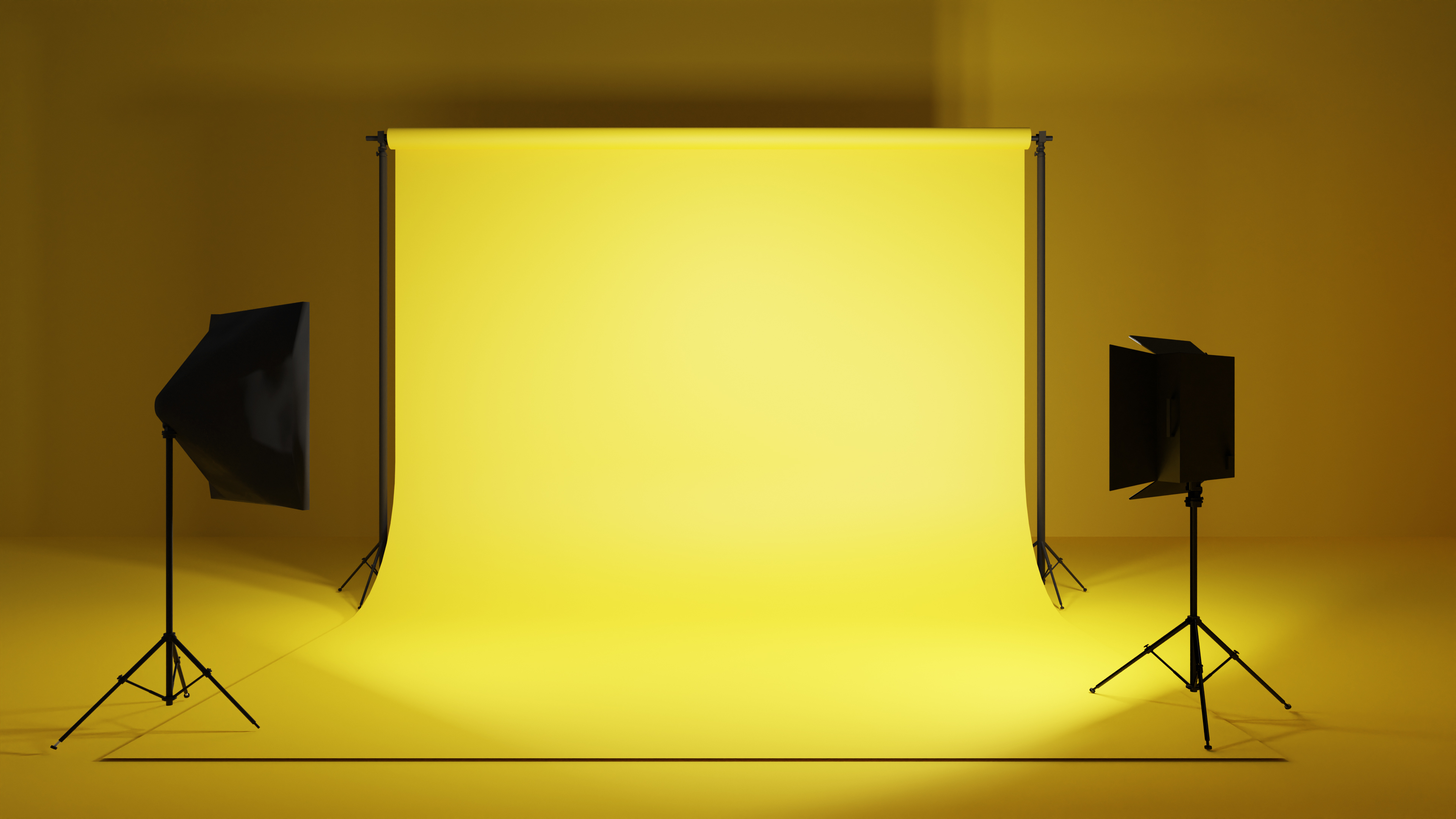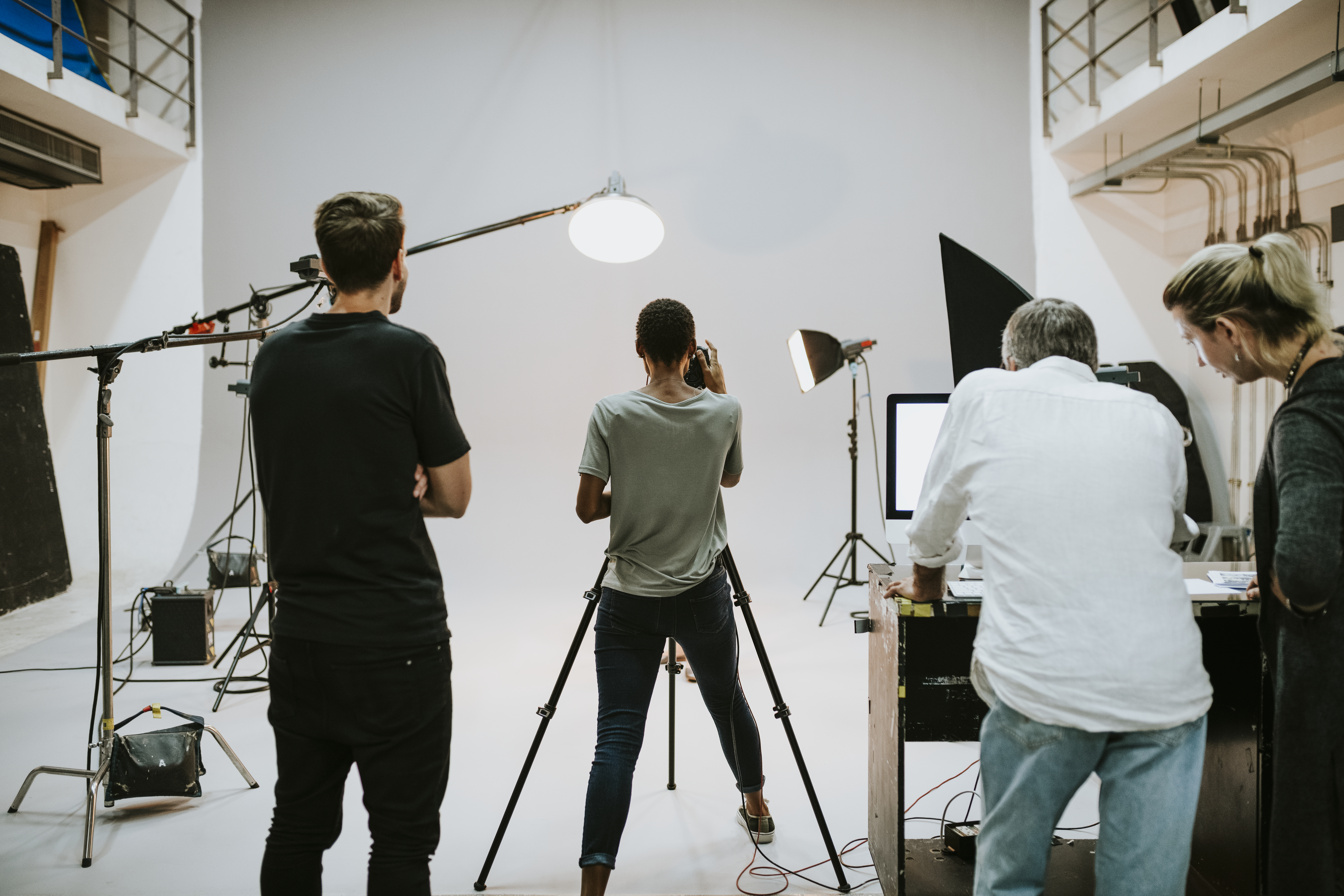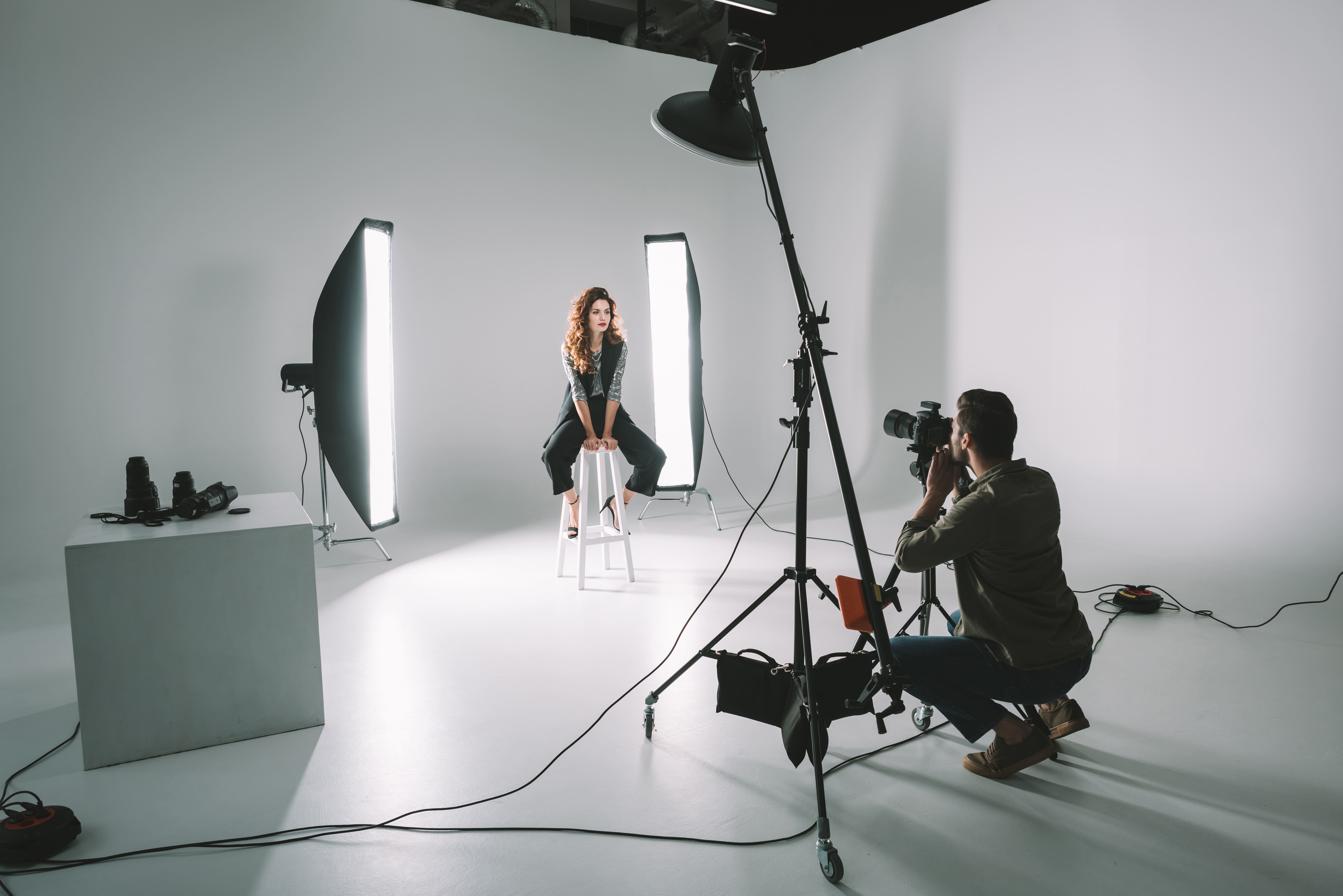Photography is often reduced to aiming a camera at someone and pressing a button. The result, thanks to modern technology, is usually a good picture. But what makes photography an art is how the photographer uses light to their advantage. Someone practicing taking pictures knows how to use various light sources to create their desired image.
A good photographer knows how to plan their shots, so their subject is not washed out. But a great photographer knows how to turn light into a canvas for their work.
So, what does it take to get the right amount of light for photography? A lighting kit.
A photography lighting kit can be an easy fix for highlighting your subject. Compared to natural lighting (which isn’t always accessible), lighting kits are convenient and offer the ability to align the brightness and lumens with your situation.
But it can be confusing to know which lighting kit is right for you. Even if you have been a photographer for some time, it can be difficult to find the best fit. So today, we will look at how to choose a good lighting kit to make your photography work something special.
You’ll also find the top brands for photography lighting kits in this post, as well as answers to some common questions about the equipment.
Let’s jump in.
Importance of good lighting
Photographs are all about light. Their essence is possible due to light bouncing off a subject to react on a strip of treated film. Nowadays, digital technology has negated the need for celluloid film, but the essence of photography is still true: good light makes good pictures.
If you try to photograph in a dark room, you’ll get a dim and smudged mess. This is because the lack of light means the camera cannot pick up whatever it aims at. Without a good light source, the image will be blurry and indistinct. However, more than just switching on a light bulb is required. Many household lights need to be more powerful to create a clear image.
Most cameras have a built-in flash bulb for a brief flash of light while taking photographs. But have you ever looked at the pictures you get with these standardized flashes? You’ll undoubtedly have noticed how flat and stark those pictures look, devoid of depth or life. A built-in flash is great for flash photography, but if you’re serious about getting the best shot, you need more.
The most obvious solution to a well-lit photograph is to take it outdoors in direct sunlight. This natural source of light provides the most effective reflection for a good picture – sometimes. Even outdoor shoots are heavily affected by the time of day, as the strength of sunlight wanes as the day wears on.
So, what can you do? If a room’s light isn’t enough, and the sun is too temperamental to provide great photographs every time, then what is the solution? Lighting kits.
Types of photography lighting kits
Lighting kits are very much as the name suggests: they are sets of equipment photographers use to create the perfect lighting for their shots. If the concept is new to you, you will at least be peripherally aware of them. Think of a photo shoot with a large white screen and lights set up on tripods. These exist so that the photographer can specifically control every aspect of the light, such as:
- How bright it is
- How far away is the light source is
- In which direction the light comes from
- How much of the subject is lit up
Moreover, a lighting kit can be as simple or complicated as the photographer wants. Many kinds of tools are used in lighting kids, from a single lamp to more specialized items such as light boxes and umbrellas. Everything serves its purpose and is chosen for a reason.
Flashlights
Flashlights are larger versions of the lights already built into most cameras. Their main purpose is to focus a single, sudden light on a single subject while the camera’s shutter closes. This gives the subject a stark and central focus to the image taken, as the light bouncing off them will be caught more clearly than anything else.
Having an external flashlight (or module) allows you to change the direction of the light it creates. This can be used in several ways to affect the nature of a shot, such as creating sharp contrast on one side of the subject. Typically, these are used in model photography, as they highlight the subject while softening its surroundings. Options such as the Godox E300 and GODOX QS400II are ideal as they are compact and bright. They are triggered by a trigger cord or a digital flash trigger and programmed according to your brightness and speed preferences.
Speedlight lighting kits
If you’ve never heard of speedlights, they are external flash units that you can use with softboxes and umbrellas to disperse light. They are highly versatile and usually quicker than standard flashes. If you’re going to shoot stills, action shots at sporting events, or product images, speedlights are highly recommended.
You can make your own speedlight kit by purchasing a bolt flash and adding an accessory kit with reflectors and umbrellas. Going the DIY route is recommended because not many complete speedlight kits currently exist in the marketplace.
Consistent Lighting Kits
In contrast to flashes, consistent lighting kits are used to create a stable lighting environment. They consist of one or more solid lighting modules set to a specific brightness and left that way. These are ideal for providing a uniform background light to all your shots, whether you use a flash or any other kit. Without them, anything behind or around the main subject of a shot can become blurry, unfocused, or inconsistently lit from picture to picture.
A consistent lighting kit can be as simple as a room’s lighting or a specific piece of kit. The latter is more ideal, as it gives you greater control over the light’s intensity and direction. Some good options in this kit category are GVM RGB Led Video Light and UBeesize Softbox Photography Lighting Kit. These kits are ideal for daily photography, including fashion shooting, live streaming, and portrait sessions.
Monolight strobe lighting kits
These are self-contained strobe sources comprising stands, reflectors, and power resources. The main advantage of using these kits is that they remove the need for additional power generation.
How so, you ask? All the power is there in the head of the lamp. You can get 150+ watts from each strobe moonlight, meaning you won’t be any issues in lighting your subject. Monolight strobe kits like Flashpoint XPLOR 400PRO are ideal for model photography.
Filter Kits
Filter kits give every picture an added tone that makes the subject pop. What’s more, they come in a range of methods for use. Some filter kits, such as the K&F Concept Filter Kit, are applied directly to the camera’s lens, changing the light’s nature as it passes into it. Others, like the UBeesize Color Correction Light Gel Filter Sheet, are a set of sheets applied to the lighting modules to modify the color of the light cast on your subject.
The type you use will depend on what kind of effect you want. Gel and filter sheets are ideal for adding color to backgrounds or as overlays on your subjects. Lens filters are intended to alter the quality of bright light drawn into the camera.
Core components of a photography lighting kit
Now, let’s look at the essentials of a photography lighting kit.
Light Stands
Light stands are extending poles to which you attach your lighting modules. While not a piece of equipment that lights your shot, a light stand is a great tool when you need to position your modules. For any studio environment, a great range of light stands is vital. These will help maintain consistency with the positioning of your lights and are extremely versatile due to their telescopic nature.
Manfrotto 5001B is a compact option that packs a punch, whereas the Savage Universal MultiFlex adds a dynamic element to your photography kit. There’s also the Amazon Basics light stand, which is ideal for those on a budget.
If you don’t have access to a light stand, however, ladders and other solid surfaces will suffice, so they are something only some photographers need. Sometimes, you need a willing participant to stand and hold the light for you.
Lighting Wands
If you need only a small amount of light for a brief period, say for one or two shots, a lighting wand is a tool for the job. These are strips or poles of light that project over wider areas. Typically, they are handheld, making them highly versatile and directional, but not for longer periods.
Lighting wands such as Yidoblo LT-WY4 and YONGNUO YN660LED are great for on-site shoots requiring extra brightness or color. It’s a fantastic tool that is easily portable, doesn’t take long to set up, and can even be switched to different colors, all controlled by a phone app.
Softboxes
To the uninitiated, softboxes might look odd. They are cloth boxes of various sizes, with most sides blacked out, while the frontmost is covered in white cloth. Their purpose is simple: the dark sides of the box stop the light from coming out, while the white side allows a small amount out. The light that comes out will be diffused by the material, making it softer (hence the name) than the light from a bare bulb.
Softboxes are usually used when photographing models as they soften the light cast directly, reducing sharp or unpleasant angles. This softened light most simulates natural light, creating a more realistic or natural look. If you’re looking for softboxes for hobby photography, options like RALENO Softbox and UBeesize Softbox have you covered. These softboxes allow you to achieve a wider lighting angle while delivering a softer and more uniform light.
Umbrellas and Reflectors
Like softboxes, umbrellas and reflectors are used to diffuse light, make it softer, and control the light’s direction. However, the biggest difference is that with a softbox, the light is aimed directly at the subject. With reflectors, you aim the light away.
As the name suggests, umbrellas are like ones you would use to protect yourself from rain. However, the inside arcs are covered in reflective material. The umbrella is inserted below a directional light bulb, and the light itself is reflected over it. Due to the reflected nature of the light, it becomes softer and more natural, allowing you to use a powerful light without drowning out the subject.
You can buy a whole kit that includes umbrellas, or go for individual options like Westcott 4633 7-Feet Silver or Godox UB-165W. These umbrellas contain a parabolic reflector that focuses light effects on the details of the subject.
Reflectors work under the same principles, only handheld pieces of reflective material. These are set up facing the subject so the light from behind or beside it can be aimed at them, creating a uniform coverage. They are best used whenever you want to create a shot in which the subject seems to cast no shadow or create a gentle and natural look to portraits. Want individual reflectors for a DIY photography lighting kit? Glow ArcLight II and Westcott Collapsible 5-in-1 are a boon for beauty, fashion, or portrait photography.
Lighting Controls
Many of the tools above will come with their control methods, but you don’t always have to use them. Most are designed to be utilized in sync or with consistent settings. Not all beginner equipment will have a unifying option, but some kits, like GVM RGB, offer a mobile app. From this app, you can control options such as the color of the light, its intensity, and temperature.
Other options
Aside from the kit mentioned above, a few other tools can be added to your lighting kits to modify your lighting control further. Some of these are:
- Barn Doors – These are rigid flaps affixed to the sides of your lighting modules. They can be opened or closed to affect the direction of the light emitted. Wide open and light will emit an even arc in all directions, but by closing them, you narrow this arc into a focused spotlight.
- Grids and Shoots – Similar to barn doors, these narrow the light emitted from your light modules, creating shadows. They are great for playing with darkness and light in your shots.
- Beauty Dishes – As a midway between an umbrella and a softbox, beauty dishes create softer light while directing it at the subject. They are similar in design to umbrellas but go behind the light rather than in front.
How to choose a photography lighting kit
Knowing all that is available for your lighting kit can seem overwhelming. There’s so much to choose from, all with specific uses. So how do you know what kinds of lighting kits you need for your art?
The easiest method for determining what you need is to run through the following list:
- What level of photography are you at?
- What kinds of things are you shooting?
- Will you need to transport it?
- What is your budget?
For the first question, this is simple: if you’re starting, you won’t need a full-studio kit. Consider how much experience you have had taking pictures and constructing your lighting. If this is your first time, your best bet is to keep it simple. Buy only a flash and a lighting wand. These two items teach you much about how light works and plays with your subjects. This experience is important for more complex kits, as it gives you an idea of what you want to achieve and the limits of these two items.
Once you are comfortable getting what you want out of these two items, you can start adding in other modules, such as constant lighting rigs or softboxes. Build your tools as you find a new form of lighting you want to experiment with, and you’ll never go too far.
If you have had any experience before, it pays to start with what you know and grows from there. If you’ve used everything, dive right in, but only add what you can feasibly handle.
The subjects you choose will also determine what kind of kit you buy. If you’re looking to get into studio photography – being models, portraiture, or advertising shots- you’ll need to kit yourself out with a decent array of lighting options. You will not need a flashlight or softbox if you’re more interested in sports, action, or nature photography.
Consider your subjects and where you will be taking your photographs, which will give you an idea of what you need. Outdoor photography will not necessarily need a huge setup of controlled gear. On the other hand, relying on a single flash for indoor photography is very limited in use.
All the gear you need will have to be transported wherever you shoot. If you’re looking to do travel photography or work at venues or events, then you’ll need to be able to move it. If you work from a studio (at home or on-site), you will only find yourself moving a little. Many lighting modules can be bulky, so moving them may be easy if you need access to a car or other large vehicles. Therefore, light wands are so beloved in art because they are small and easy to transport.
Finally, as we all know, money makes the world go round. Thanks to the internet, many items can be acquired for much less than they used to be, but photography as a hobby or a job is still expensive. If you have a limited budget, you’ll want to focus only on the essentials until you can save up for more.
A good flash, a lighting wand, and a reflector can all be bought relatively cheaply and make the backbone of any good lighting equipment set, so start there and add what you can only when you can afford it.
Top brands for photography lighting kits
Let’s look at some of the popular brands in the lighting kit industry. You may have heard of some of these before, but it’s always good to explore and find what company best suits your needs.
RALENO
Starting in 2018, RALENO has quickly risen in popularity to build a globally recognized brand. Beginning their journey with lamps, it wasn’t long before flashes, softboxes, and stabilizers were added to their repertoire. They have even begun exploring the world of microphones to widen their areas of expertise.
Their RALENO LED soft light panel is a brilliant tool for any on-the-move photographer looking for studio-quality light. It is mobile enough to be mounted on most cameras, making it a portable tool.
StellaPro
StellaPro offers a series of lighting kits that are a marvel to behold. They are a staple of high-speed, low-blur photography and are beloved by many fashion and studio photographers worldwide. Their focus on fast and sharp photography has given rise to some of the most powerful and quickest flashes on the market today.
If you’re interested in StellaPro’s kits, you’ll want to stick with top choices like Light & Motion CLx8 and CLx10. These models offer studio quality rendering and as much as 500 lumens for up to 15 hours in one charge.
Elinchrom
Elinchrom has been a name in the photography industry for a long time. First founded in 1968, they have been pioneers in the realm of portable photography lighting equipment. With such achievements as the first portable flash unit and the first radio-controlled flash gun, they mean business when it comes to lighting.
These days, their D-Lite RX range offers fantastic studio-quality flash on the move, while the Rotolight remote transmitter works with several camera brands to provide succinct flash timing.
Interfit USA
Since the turn of the century, Interfit USA has been working to provide affordable lighting options to photographers, seasoned and new. Their simplified products take what every studio setup needs and reduce it to a handy and affordable module.
Their range of monolights is simple and hugely customizable with their range of modifiers. Take a simple Badger Beam and combine it with their foldable softboxes and adjustable light stands, and you have everything you need for beautiful portraits.
Flashpoint
Flashpoint has a truly astonishing range of mounted flash guns and transmitters designed for every camera. Their focus on speed and versatility has been a solid component of photography since 1991, providing advancements in tech and improvements in durability. They believe in making every studio and photography job as simple and clean as possible.
Flashpoint XPLOR 400PRO R2 TTL is a good choice for beginner photographers. It can offer flash durations from 1/240 to 1/12,820 seconds and has various other features. Break out that old legacy flashes, and you’ll be back up and running with all the new tech!
Profoto
Another old guard in lighting evolution, Profoto, has been around for over fifty years and continues to provide the best lighting tools. They have long earned their moniker as the “light shaping company” for a reason with products such as the OCF Softbox range. They also excel in gels and filters, providing many hues of correction lenses and light modules.
But Profoto is one of the more expensive options on our list, offering monolights like Profoto D2 500Ws AirTTL for above $2,000.
Broncolor
Over the last sixty years, Broncolor has been operating out of Sweden to provide the world with exceptional lighting modules and studio setups. Their selection of continuous lights and light shapers is almost unrivaled, having been a part of European photography for over half a century.
Their Siros L lights are battery-operated and well-tuned for prolonged continuous use. They even offer a great flash mode to make them a brilliant multitool for budding photographers to cut their teeth on.
PULUZ
PULUZ is a Chinese manufacturer specializing in photography accessories like lighting kits and camera bags. Its products are available in the US and around Europe, with the company guaranteeing quality for the end consumer.
Beginners can look into its Photo Studio Light Box Portable, which allows you to photograph products with ease. Most PULUZ kits currently available on online marketplaces are ideal for creating a mini photography studio.
LimoStudio
LimoStudio is a well-recognized brand for photo equipment. Since a decade, it has continued to expand its product lines to meet photography needs. The brand offers high-performance products such as light stands, backgrounds, tripods, and more for use in commercial/photography applications.
LimoStudio also offers complete photography lighting kits like the 700W Output Lighting Complete Kit. It comes with a 33-inch umbrella reflector, fastening cable ties, an 82.3-inch light stand, plus more.
Photography lighting kit FAQs
Once you have a lighting kit picked out and ready to go, you might need help figuring out where to go with it or what to do. Fortunately, we have answered a few frequently asked questions to help you get started!
What light is closest to natural light?
LED lights have been designed to offer the closest approximation to natural light. The diodes used in producing the light are powerful, and the lenses allow the light to travel through cleanly. It is always best to use LED lights to simulate natural light.
How do I photograph indoors?
This mostly takes a lot of trial and error, but the best way to produce a natural picture indoors is to begin with, natural light. Open every window to flood your room with light and use this as an indicator of your goal. If adding lights from continuous modules or flashes improves what you see, you’re on the right track. If your images look washed out, it’s time to reduce the outdoor light and start building up from an LED continuous light source. Test each light option and move your sources and subjects until you get the desired effect.
What lighting should I use outdoors?
The best kind of lighting for outdoor shots is speedlights. Since the outdoors has its light source, you can easily overwhelm your subjects with too many additional lights, so augment your natural light with a high-lumen speed or flash.
How many lights should I use in a studio?
The rule of thumb for studio shoots is no more than four. Typically, you will want one continuous light source to provide a base in your shot. On top of that, diffused light through a softbox or an umbrella will help augment the continuous light to a more natural level. After that, a flash should be enough, but occasionally using a light wand to create the desired lighting effect can help.
Is there a main light source in the studio?
Yes, this light is usually positioned in front of or just to one side of your model. It is known as a leading light and offers the main lighting backdrop for your shots. The other lights are intended to augment the leading light.
Conclusion
Lighting kits are the core of personal and professional photography. Without them, you’d find it difficult to capture fine details of the subject or get images clear enough to use in your portfolio or sell online. Although natural lighting is recommended for a lot of photographers, lighting kits are a blessing when the weather is cloudy or the shoot is scheduled at night. Several options such as LimoStudio 700w Output Lighting Complete Kit are available to you.
And if you want to go DIY and create your own lighting kit, you can start purchasing the essentials listed in this article.
